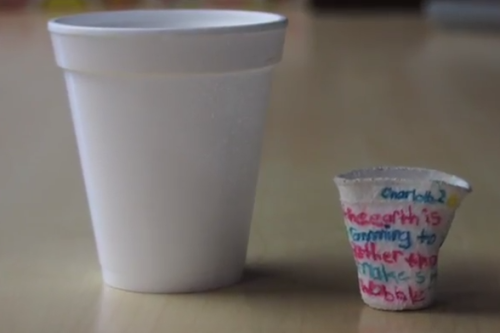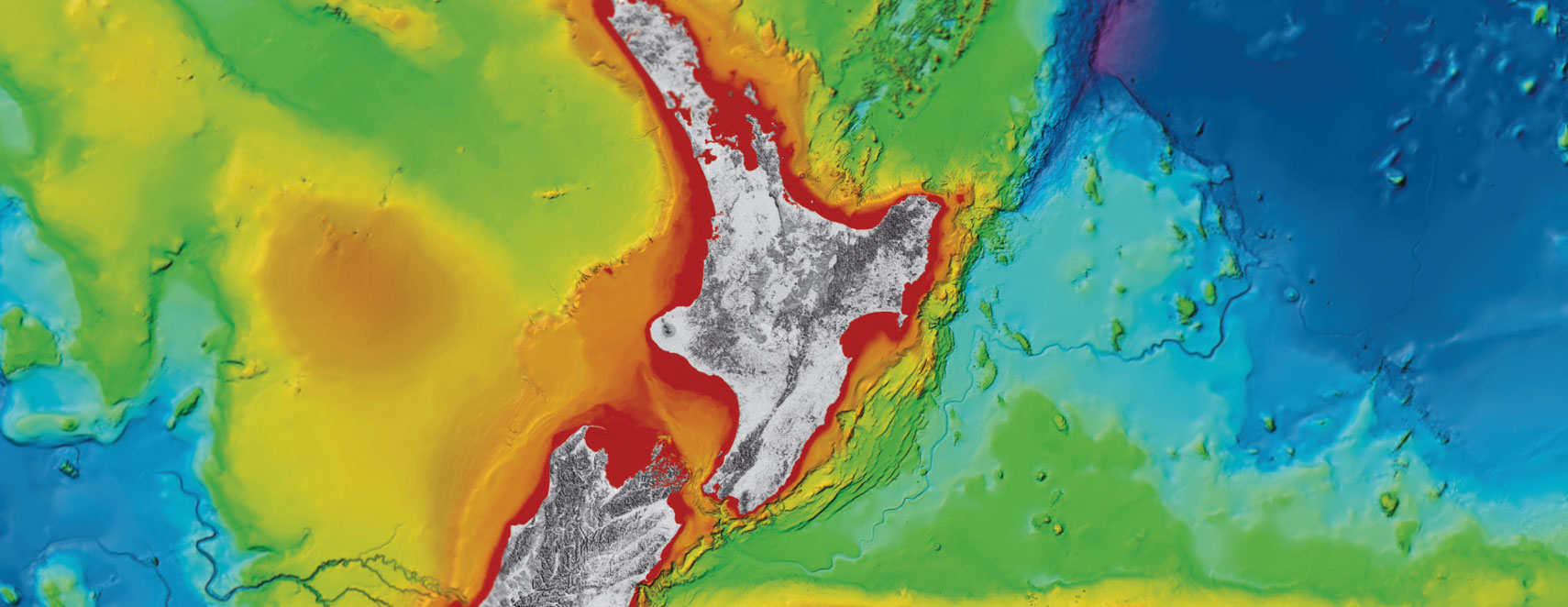
A shrinking experience for Gisborne students’ artwork

Scientists on board the research vessel JOIDES Resolution have carefully lowered the winning entries from the East Coast LAB and GNS Science ‘Art Under Pressure Competition’ to the seafloor.
Earlier this year, East Coast LAB teamed up with GNS Science to run a competition for primary school students from the Gisborne region to promote awareness of the Hikurangi plate boundary and its effects on the East Coast.
Students had the opportunity to create artwork on styrofoam cups and the winning entries from Te Hapara School were decorated with words and images about science, earthquakes and tsunami.
Kate Boersen from East Coast LAB says the pressure at the bottom of the ocean from all the water above and around shrunk the artwork uniformly, so that the original cups are now only a fraction of their original size.
“This works because styrofoam is mostly air and as the cups descend to the seafloor, the air gets uniformly squeezed out, leaving a miniature cup behind,” says Kate Boersen.
The winning entries were sent down to the seafloor near where scientists have drilled narrow cores to study the Hikurangi subduction zone.
“While I’m sure the children will be excited to see their shrunken art they won’t get a chance until the new year when the research ship comes back into port.” Says Kate Boersen.
The scientists are collecting drilling data up to 1200m beneath the seafloor at three sites that range in water depth from about 1000 m to 3500m offshore Gisborne.
During the drilling, instruments will record physical information about the rock types that are thought to host the Hikurangi subduction zone.
The Hikurangi subduction zone is part of the Pacific ring of fire where the Pacific tectonic plate dives beneath the Australian plate. Scientists believe the zone is capable of generating earthquakes of more than Magnitude 8.
The International Ocean Discovery Programme (IODP) has been sending artwork down to the seafloor since the early days of the program (then called Deep Sea Drilling Project) in the early 1980s.
New Zealand participates in IODP through a consortium of research organisations and universities in Australia and New Zealand, including GNS Science, NIWA, University of Auckland, Victoria University of Wellington, and University of Otago. The Australia and New Zealand IODP Consortium (ANZIC) is supporting participation of New Zealand scientists and outreach officers on both expeditions.
[YouTube id=e_AllDCHRYw]
Disclaimers and Copyright
While every endeavour has been taken by the East Coast Lab Hikurangi Subduction Zone M9 to ensure that the information on this website is
accurate and up to date, East Coast Lab Hikurangi Subduction Zone M9 shall not be liable for any loss suffered through the use, directly or indirectly, of information on this website. Information contained has been assembled in good faith.
Some of the information available in this site is from the New Zealand Public domain and supplied by relevant
government agencies. East Coast Lab Hikurangi Subduction Zone M9 cannot accept any liability for its accuracy or content.
Portions of the information and material on this site, including data, pages, documents, online
graphics and images are protected by copyright, unless specifically notified to the contrary. Externally sourced
information or material is copyright to the respective provider.
© East Coast Lab Hikurangi Subduction Zone M9 - www.eastcoastlab.org.nz / +64 6 835 9200 / info@eastcoastlab.org.nz
